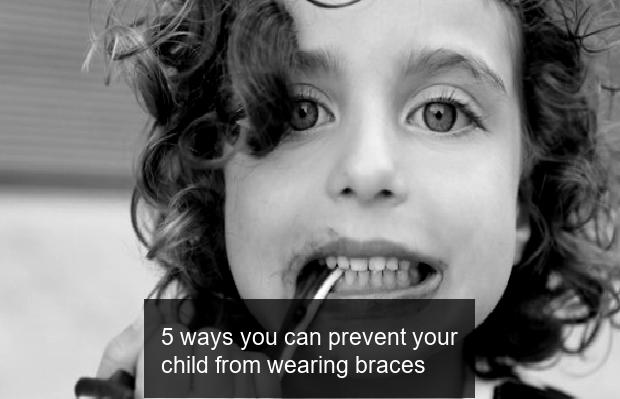5 ways you can prevent your child from wearing braces
One of the most common questions I get from parents is whether their children will need braces. These treatments, which are both long and costly, may not be accepted by some children. Although alternative and aesthetic solutions to braces have been produced today, as a parent, you can direct your child’s jaw and face development. In this article, I will talk about beliefs that are often misunderstood and ways that you can quickly apply in daily life.

1. Baby teeth will fall out at the age of 7, it is not worth it to be rotten.
There are 20 milk teeth and they are replaced by permanent teeth at reasonable intervals from 7 to 13 years old. This period is called the “mixed dentition period”. The mineral structure of milk teeth is different from permanent teeth; Therefore, the bruise progresses faster. In the mixed dentition period, the bacteria that cause caries in the primary teeth infect the permanent teeth and the permanent teeth in the eruption stage also begin to decay rapidly. Early milk tooth loss, interface caries, chewing surface losses cause deterioration of the jaw structure and crooked teeth during the developmental period of your child. Milk teeth form the basis of properly aligned and healthy permanent teeth. If this foundation is not laid firmly, dental treatments will become increasingly difficult.
2. My child sleeps with his mouth open at night, his nose is stuffy because he is always sick.
The unused organ becomes atrophied. Breathing should be taken through the nose and exhaled through the nose. Breathing through the nose of sick children is a valuable step for the improvement of the disease. For this, you can use sea water or nasal wash solutions, and you can also do nose opening exercises (see my previous article). The tongue and neck muscles of the child who mouth breathing develops imperfectly and face, jaw and spine problems may occur.
3. All milk teeth must fall out in order to wear braces
Today, not only braces are used to correct tooth crowding. From the age of 3, chin development guidance, training or treatments with clear plates can be applied. You can consult a pedodontist to follow the development of the jaw and teeth from the age of 1 at the latest, and to intervene if necessary.
4. My child should be fed softly so that the fillings in his teeth do not fall out.
Dental fillings are materials that are adhered to tooth surfaces within the appropriate physics and chemistry rules. If the filling is insufficient, your dentist will tell you about primary tooth veneers. However, eating soft, purees, squeezing fruit juices hinders the development of children’s jaws and the teeth cannot fit in the underdeveloped jaw. So make sure your child eats hard foods (carrots, apples, nuts, peanuts, meat) that they can chew.
5. If my child does not have a speech problem, there is no language tie.
Language tie can be diagnosed and intervened from birth. The first symptom of tongue tie is difficulty in sucking, breast refusal, and colic symptoms.
Issues that language linkage may cause in the developmental period:
- Jaw and facial development
- speech and phonation
- mouth breathing
- tension in neck muscles
- Jaw joint problems
The tongue tie operation is a minor operation and can be intervened quickly. Although braces are considered for aesthetic purposes, our priority is health. Health starts from the mouth.
Stay healthy.

